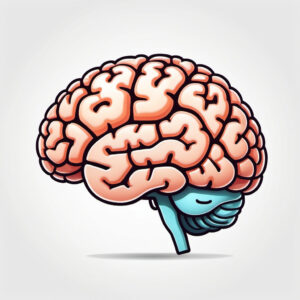Imagine if you had a magic switch in your brain that could turn down pain like a dimmer on a light. Sounds too good to be true, right? Well, it turns out, your brain already has this built-in feature—you just have to learn how to use it.
Pain isn’t just something that happens to you; it’s something your brain creates. That might sound strange, especially if you’re dealing with a stubborn backache or aching joints that feel very, very real. And they are! But the way your body processes pain isn’t just about injury or inflammation—it’s about how your brain interprets those signals. And the good news? Your brain can also dial those signals down, sometimes even shutting them off entirely.
Think about the last time you got a paper cut. At first, it stung like crazy, but then something distracted you—maybe you got a phone call or started a conversation—and suddenly, you weren’t thinking about it anymore. The pain didn’t disappear, but your brain stopped focusing on it. That’s because your nervous system is designed to prioritize what it thinks is important. If your brain decides that pain isn’t a top priority at the moment, it literally dials it down.
So, how do you get your brain to flip that switch more often? One way is through movement. When you exercise, your body releases endorphins—natural painkillers that work similarly to opioids but without the dangerous side effects. Even light movement, like stretching or walking, can send signals to your brain that help override pain messages. It’s like changing the channel on a bad TV show—suddenly, your brain has something better to focus on.
Another powerful tool is mindset. Studies have shown that people who believe their pain is temporary and manageable often experience less of it. This isn’t about pretending pain doesn’t exist—it’s about reframing it. Instead of thinking, “I’m always in pain,” shifting to, “My body is healing, and I have control over my pain” can make a real difference. Your brain listens to the messages you tell it, and when you send it signals of safety instead of distress, it responds accordingly.
Breathing techniques and meditation are also amazing at flipping the pain switch. Deep breathing helps calm your nervous system, reducing the stress response that amplifies pain. Meditation, on the other hand, strengthens the part of the brain that controls focus, helping you shift attention away from discomfort. People who practice mindfulness meditation regularly often report feeling less pain—even when their physical condition remains the same.
Then there’s the power of distraction. Ever notice how laughing with friends, watching a great movie, or diving into a hobby can make pain feel less intense? That’s because engaging in something enjoyable shifts your brain’s focus, reducing how much attention it gives to pain signals. The brain can’t fully concentrate on two things at once, so giving it something positive to focus on is a sneaky but effective trick.
Pain might feel like an unavoidable part of life, but your brain has more control over it than you think. By using movement, mindset, relaxation, and distraction, you can train your brain to turn down the volume on pain—no magic required!









💯👑🙏